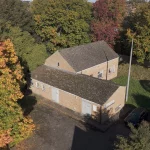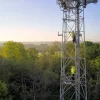Ofcom UK Tweaks 3.4-3.6GHz Licenses to Help 5G Mobile Services
The UK telecoms regulator has provisionally proposed to accept a request by Three UK, EE, O2 and Vodafone to vary a number of spectrum access licenses for the 3.4GHz, 3.5GHz and 3.6GHz bands in order to facilitate new Active Antenna Systems (AAS), which could help the future roll-out of ultrafast 5G mobile broadband networks.
The proposed change would remove an obligation on the licensees that has been effectively redundant since changes were made to Three UK’s (Hutchison/UK Broadband) 3.6GHz licence at the end of 2018 (i.e. giving them access to a 100MHz block of contiguous spectrum) and is also consistent with the European Union’s (EU) Harmonisation Decision.
As a technology AAS has already been used with some 3G and 4G networks, although it’s certainly best suited to the design of 5G networks, where its flexible radiation pattern control can help adapt to the changing situations in a mobile network.
Advertisement
The licence variations would:
1) Add to the special conditions relating to Radio Equipment to accommodate new total radiated power (TRP) in-block and out-of -block power limits for active antenna base stations (AAS).
2) Raise the terminal power limits from 25 dBm to 28 dBm.
3) Remove the additional band edge requirement above 3605 MHz and insert a new requirement at 3800 MHz and above.
According to Ofcom, the practical effect of AAS for consumers could be a higher quality of service in busy areas once a significant number of users have devices which support the 3.4-3.8GHz band(s). This is because AAS helps to enable Massive Multiple-Input Multiple-Output (MIMO), which can “increase the capacity of the radio access network in busy areas.”

“This technology has the potential to significantly increase the spectral efficiency and network capacity through the use of beamforming (focusing radio energy in a specific direction), spatial multiplexing (re-using frequencies to send data to different users) and other techniques which take advantage of the location of people and their phones,” said Ofcom’s consultation.

Advertisement
Mark is a professional technology writer, IT consultant and computer engineer from Dorset (England), he also founded ISPreview in 1999 and enjoys analysing the latest telecoms and broadband developments. Find me on X (Twitter), Mastodon, Facebook, BlueSky, Threads.net and Linkedin.
« ISP Plans FTTP Broadband for 350K Premises in South West England
















































Comments are closed